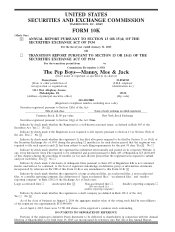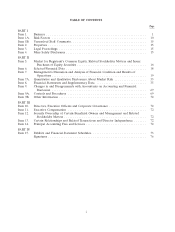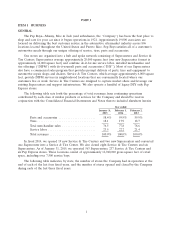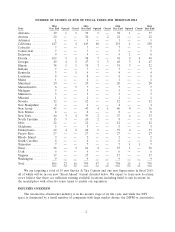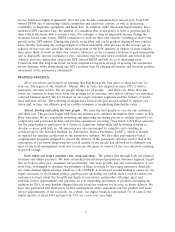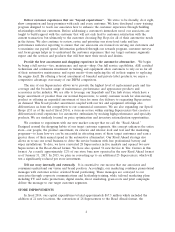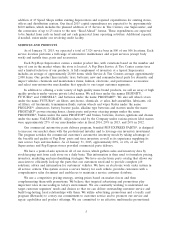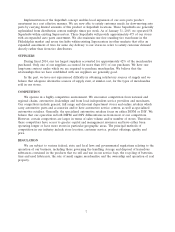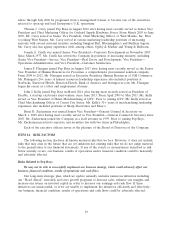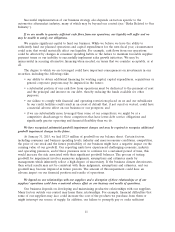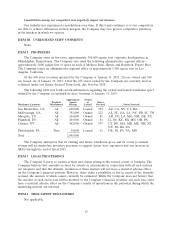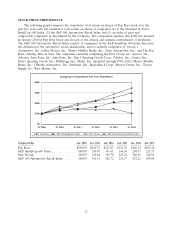Pep Boys 2014 Annual Report Download - page 13
Download and view the complete annual report
Please find page 13 of the 2014 Pep Boys annual report below. You can navigate through the pages in the report by either clicking on the pages listed below, or by using the keyword search tool below to find specific information within the annual report.Implementation of the Superhub concept enables local expansion of our auto parts product
assortment in a cost effective manner. We are now able to satisfy customer needs for slow-moving auto
parts by carrying limited amounts of this product at Superhub locations. These Superhubs are generally
replenished from distribution centers multiple times per week. As of January 31, 2015, we operated 58
Superhubs within existing Supercenters. These Superhubs will provide approximately 475 of our stores
with an expanded auto parts assortment. We also maintain one free standing tire warehouse in the
Philadelphia market and seven tire hubs within existing Supercenters in other markets that offer an
expanded assortment of tires for same day delivery to our stores in order to satisfy customer demand
directly rather than from tire distributors.
SUPPLIERS
During fiscal 2014, our ten largest suppliers accounted for approximately 42% of the merchandise
purchased. Only one of our suppliers accounted for more than 10% of our purchases. We have one
long-term contract under which we are required to purchase merchandise. We believe that the
relationships that we have established with our suppliers are generally good.
In the past, we have not experienced difficulty in obtaining satisfactory sources of supply and we
believe that adequate alternative sources of supply exist, at similar cost, for the types of merchandise
sold in our stores.
COMPETITION
We operate in a highly competitive environment. We encounter competition from national and
regional chains, automotive dealerships and from local independent service providers and merchants.
Our competitors include general, full range and discount department stores and online retailers which
carry automotive parts and accessories and/or have automotive service centers, as well as specialized
automotive retailers. Generally, the specialized automotive retailers focus on either DIFM or DIY. We
believe that our operation in both DIFM and DIY differentiates us from most of our competitors.
However, certain competitors are larger in terms of sales volume and/or number of stores. Therefore,
these competitors have access to greater capital and management resources and have either been
operating longer or have more stores in particular geographic areas. The principal methods of
competition in our industry include store location, customer service, product offerings, quality and
price.
REGULATION
We are subject to various federal, state and local laws and governmental regulations relating to the
operation of our business, including those governing the handling, storage and disposal of hazardous
substances contained in the products that we sell and use in our service bays, the recycling of batteries,
tires and used lubricants, the sale of small engine merchandise and the ownership and operation of real
property.
7


